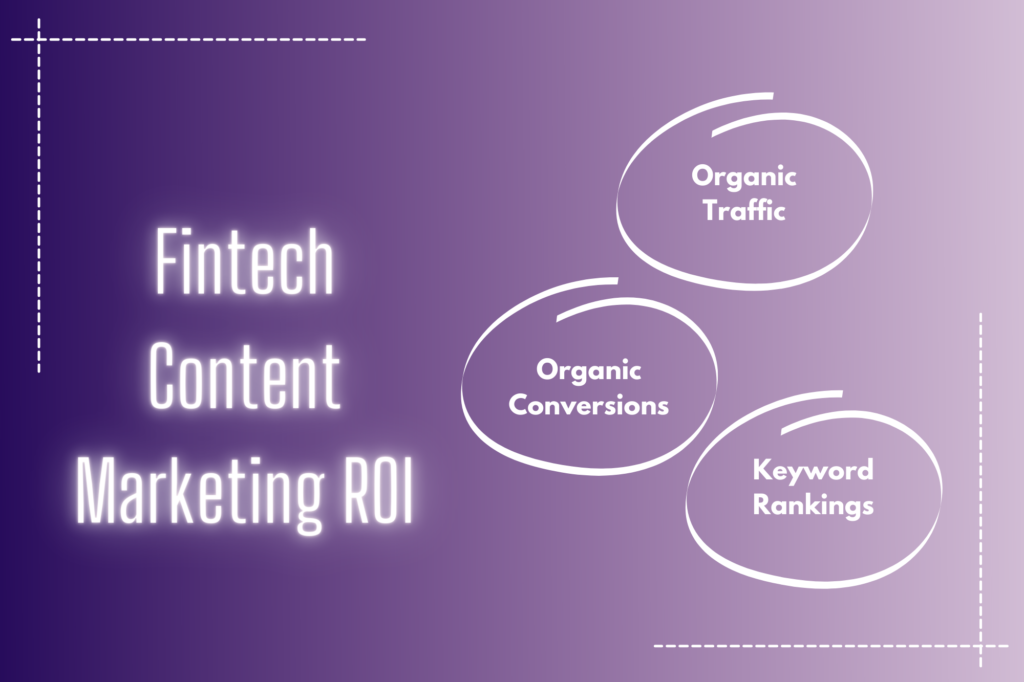Table of Contents
Last Updated on June 7, 2022 by admin
Proving ROI with fintech content marketing can be a challenge. This is one reason that many fintech marketers choose to invest heavily in paid search, where ROI is easier to calculate against clicks on ads, keywords, and conversions.
But while paid search may offer a straighter line to calculating fintech marketing ROI, it doesn’t necessarily yield better fintech marketing ROI. The same goes for other channels that have concrete metrics for determining success.
Content marketing ROI can be determined in several different ways, depending on what’s most important to your organization. Ultimately, it boils down to how much revenue was generated by content marketing versus the amount of money (and time and resources) you spent on executing it.
We’ll walk through some metrics to consider when measuring fintech content marketing ROI.
Fintech Content Marketing ROI Metrics
What are the best metrics for measuring fintech content marketing ROI? There are a couple. Many organizations are looking to boost organic traffic and organic conversions, both of which can be measured by Google Analytics.
While KPIs may differ depending on the media type, audience, or intent, measuring organic traffic and conversions is a good start. You may also want to look at supporting metrics, including tracking your page 1 keywords, average keyword rankings, and page 1 keyword search volume increases.
Benchmarks are Critical
The reason many organizations want to benchmark fintech content marketing ROI is to make a case for continuing to invest in content marketing. Proving that content marketing is worthwhile for the company means telling a compelling story using key metrics.
Every good story has a beginning – and the beginning is just as important as the outcome. It is important to benchmark content marketing efforts from the start to see how it performs out of the gate.
Knowing where you started is imperative to get where you’re going. It also provides important information about where there is room for improvement – and what is working well.
Monitoring content from the time of publications provides a good benchmark against which future efforts and iterations can be measured and improved upon. At the very least, it’s important to show how many users are finding the content and whether or not they are converting.
Reporting on Metrics

Increase In Organic Traffic
Start by measuring how much organic traffic your content produces. You can measure this by the total traffic or clicks that each piece of content receives as well as what percentage of overall traffic that represents. Again, you’ll want to measure this from the time of publication as well as at any time changes are made to the content.
The next step is to tie that content to organic conversions. This can be a trickier metric to come by since there isn’t always a straight path between the first time a person views your content and when they convert; however, it’s a key metric that you should do your best to monitor.
That said, having a solid history of data about which pieces of content are performing well can help boost overall conversions over time.
Increase In Organic Conversions
Organic conversions are often viewed as the most critical metric when measuring fintech content marketing ROI. It’s important to note that “conversions” can mean several different things depending on the type of content we’re talking about.
For example, conversions for demand generation content may be measured by the total number of PDF downloads. Promotional blog content conversions may be measured by the total number of webinar registrations (or whatever the CTA was for that particular piece).
The point is to look at the numbers that show how much users are engaging with your content and following through on calls to action.
While organic traffic data ultimately impacts the number of organic conversions, this is usually the metric to lead with in terms of fintech content marketing ROI because it highlights more directly how content is impacting the bottom line.
Keyword Rankings
SEO significantly impacts your content marketing program’s performance. It’s also a long game, which is why it’s critical to track these metrics over time.
Most organizations kick-off content planning with some keyword research to help determine which keywords to target in content production. These keywords are often centered around a topic with which your organization wants to be viewed as an authoritative expert.
As you produce more and more content around these topics, your rankings should improve for the related core and long-tail keywords — though remember, this happens over time.
Measuring your page 1 keyword growth can be a great indicator of how visible your content is – which also impacts fintech content marketing ROI. If your page 1 rankings are increasing, your content is earning you greater visibility, which is a positive indicator of ROI.
Conclusion
Measuring fintech content marketing ROI will largely depend on your organization’s priorities and goals, though there are several baseline metrics you’ll want to be sure to track, just as we’ve outlined above. Remember, content marketing is a long game and you should expect that metrics will improve over time. Monitoring, measuring, and analyzing along the way can ensure that you’re making the right changes and implementing the right strategies to reach and exceed your goals.



